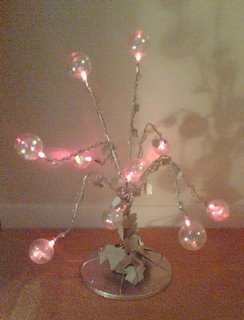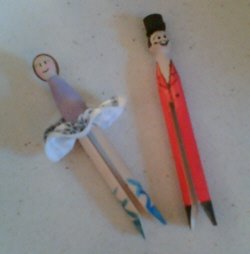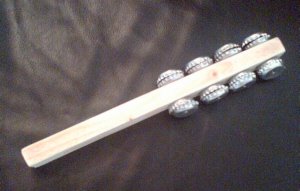Scented Stuffed Animals
 We are not talking taxidermy, we are talking lavender or scented bags in the shape of animals. These scented animals are very easy to make and are great to hang in the wardrobe, push into drawers, hang in the car, you can put them anywhere that you want to create a nice fragrance.
We are not talking taxidermy, we are talking lavender or scented bags in the shape of animals. These scented animals are very easy to make and are great to hang in the wardrobe, push into drawers, hang in the car, you can put them anywhere that you want to create a nice fragrance.All you need is...
Felt in assorted shades, PVA glue, thread, stuffing, lavender flowers, potpourri, or scented oils for fragrance.
The basis for any of the scented stuffed animals is a circle of fabric. Use a mug to draw around onto a piece of paper to create a pattern piece. Using the pattern cut out two circles of felt. This forms the animal’s head or body, and also makes up the main part of the bag.
Extras can be slipped between these two circles. Extras may be limbs, ears, horns, tails, or hair. Also tuck a loop of ribbon between the two circles to be used for hanging the scented bag up. Pin the ribbon and the extras into place so that the pins point outwards like the spokes of a bike wheel. This makes it easier to sew.
Sew a row of small stitches around the edge of the circle, making sure that the needle passes through all the layers of fabric. Leave an opening at some point on the circle, preferably where there aren't any extras hanging out. This hole is to stuff the animal.
If you have access to a lavender bush, you can collect all the dead lavender flowers and leave them upside down in a paper bag to dry. You can use these dries flowers to scent your animal bag. Lightly stuff the animal with packing and add some dried lavender flowers. Similarly you can scent the animal with potpourri.
If you are using scented oils to fragrance the animal, drop the oil essence onto the packing before stuffing the animal. The oil can discolour fabric, so adding it to the stuffing means that it won’t spoil the finish of the scented bag.
Lightly stuff the animal and then close up the opening.
To finish, cut out eyes and other features from felt and glue them into place. Animal’s eyes look really good if you cut a triangle out from the pupil. It gives the animal character.
These animals are delightful, you could make your favourite animals, or endangered animals, or animals from specific areas such as Africa, Australia, India or the North Pole.
I'm sure you will have a lot of ideas for making scented stuffed animals, and I bet you have a lot of fun making them too.
Santas Postbag
Xmas Shopping Tips

 Want to make a Rudolf wellington boot Christmas decoration unlike any other? A smashing festive ornament, who you can help adoring.
Want to make a Rudolf wellington boot Christmas decoration unlike any other? A smashing festive ornament, who you can help adoring.































